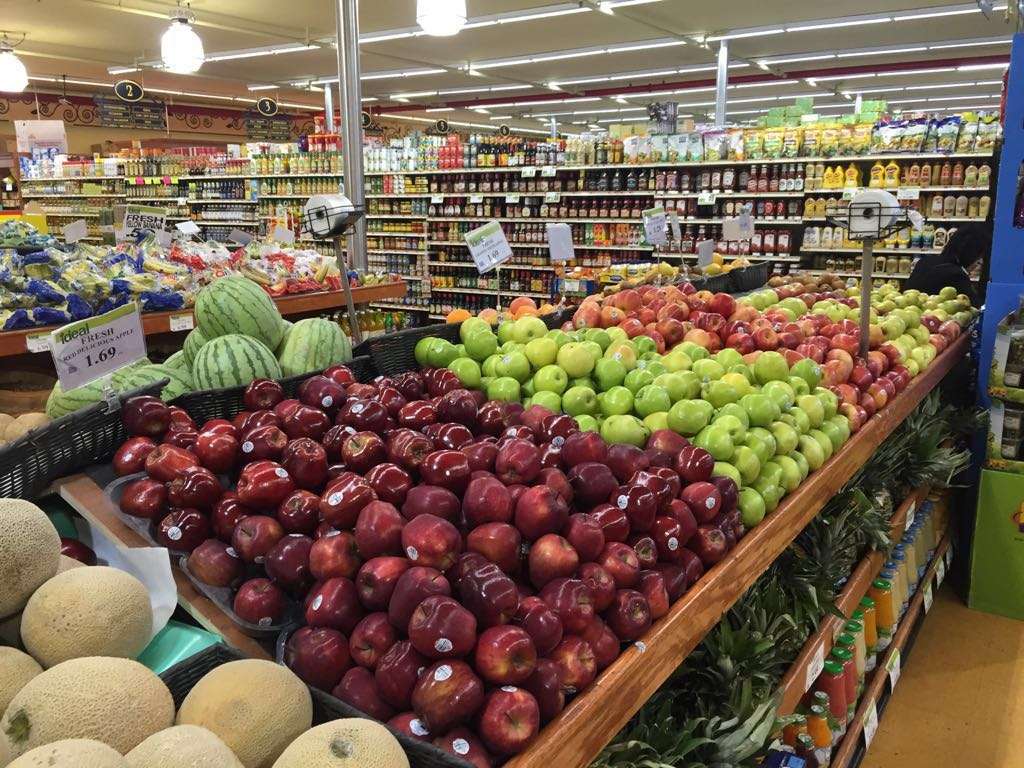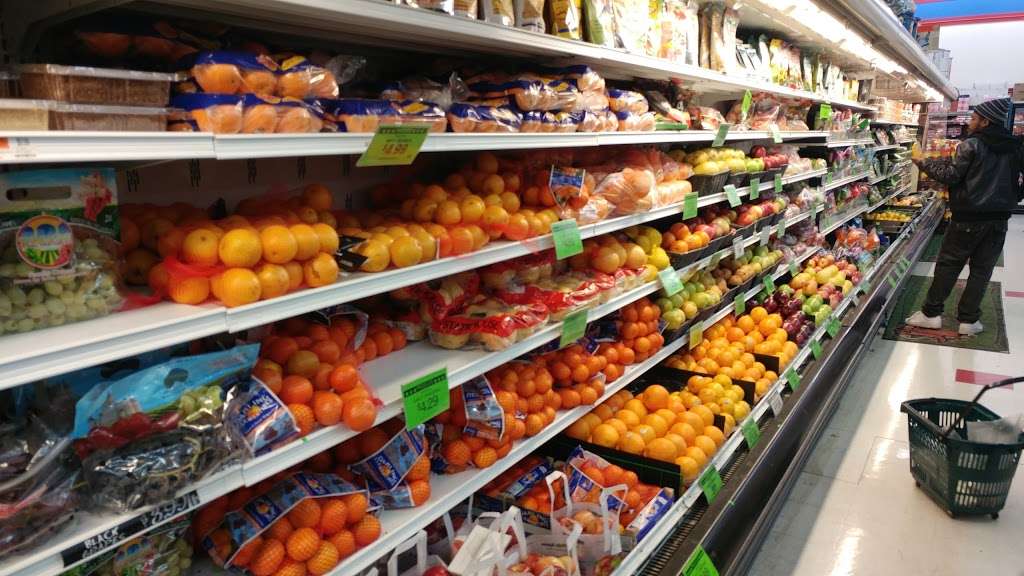The American food basket, a diverse tapestry of culinary traditions, regional flavors, and nutritional implications, stands as a testament to the United States’ rich gastronomic heritage. From the iconic cheeseburger to the soul-satisfying gumbo, this culinary landscape reflects the nation’s cultural diversity, geographic influences, and evolving dietary habits.
The composition and nutritional value of the American food basket have undergone significant transformations over time, shaped by factors such as technological advancements, immigration, and government policies. Understanding these dynamics provides valuable insights into the health and well-being of the American population.
Definition and Overview
The American food basket is a conceptual representation of the variety and quantity of food consumed by the average American. It provides insights into the dietary habits, nutritional status, and food security of the population. The concept has evolved over time, reflecting changes in food production, distribution, and consumption patterns.
Composition and Nutritional Value, American food basket
The American food basket typically includes a wide range of food items from all food groups. Fruits, vegetables, grains, meat, poultry, fish, dairy products, and fats and oils are the major components. The nutritional value of the food basket varies depending on the specific items included and the individual’s dietary choices.
However, it generally provides adequate amounts of essential nutrients, including protein, carbohydrates, vitamins, and minerals.
Regional Variations

The American food basket is a diverse and ever-evolving tapestry of flavors, influenced by the nation’s rich cultural heritage and vast geographical expanse. Regional variations in food consumption patterns are evident across the country, reflecting the unique interplay of geography, culture, and socioeconomic factors.
From the seafood-rich coasts to the hearty comfort foods of the Midwest, and the vibrant flavors of the Southwest, each region of the United States boasts its own culinary traditions and staple foods that define its unique food culture.
New England
New England’s cuisine is heavily influenced by its maritime heritage, with seafood taking center stage. Lobster, clams, and oysters are culinary staples, often prepared with simple yet flavorful techniques that showcase their natural goodness. Chowder, a thick and hearty seafood stew, is a beloved dish in the region, as are baked beans, a traditional side dish that originated with Native American tribes.
The South
Southern cuisine is renowned for its bold flavors and hearty dishes, a reflection of the region’s agricultural roots. Fried chicken, barbecue, and grits are iconic foods, often accompanied by side dishes such as collard greens, black-eyed peas, and cornbread. Sweet tea, a refreshing beverage made with black tea and sugar, is a staple in many Southern households.
The Midwest
The Midwest is known for its comfort foods and hearty dishes, influenced by the region’s agricultural abundance. Meatloaf, mashed potatoes, and macaroni and cheese are beloved classics, often served with side dishes such as corn on the cob, green beans, and potato salad.
Pie, particularly apple pie, is a popular dessert in the region.
The Southwest
The Southwest’s cuisine is a vibrant blend of Native American, Mexican, and Spanish influences. Tacos, burritos, and enchiladas are popular dishes, often filled with flavorful ingredients such as ground beef, beans, and cheese. Salsa, guacamole, and chips are ubiquitous accompaniments, adding a burst of flavor to every meal.
The West Coast
The West Coast’s cuisine is known for its emphasis on fresh, local ingredients and a focus on healthy eating. Salads, grilled fish, and roasted vegetables are common dishes, often accompanied by artisanal bread and olive oil. Avocado toast, a simple yet flavorful breakfast or brunch item, has become a symbol of West Coast culinary culture.
Health and Nutritional Implications
The American food basket provides a diverse range of food items that can meet the nutritional needs of individuals. However, certain dietary choices within this food basket can have both positive and negative health implications.
The abundance of processed foods, sugary drinks, and unhealthy fats in the American food basket raises concerns about the overall nutritional adequacy of the diet. These foods are often high in calories, unhealthy fats, and added sugars, which can contribute to weight gain, heart disease, and other chronic health conditions.
Potential Health Concerns
- Cardiovascular Disease:High consumption of saturated and trans fats, as found in processed meats, fried foods, and baked goods, can increase the risk of heart disease.
- Obesity:The prevalence of processed foods and sugary drinks, which are high in calories and low in nutritional value, contributes to the high rates of obesity in the United States.
- Diabetes:The excessive consumption of sugary drinks and processed foods can lead to insulin resistance and an increased risk of type 2 diabetes.
- Nutrient Deficiencies:A reliance on processed foods can lead to deficiencies in essential nutrients such as fiber, vitamins, and minerals.
Government Policies and Public Health Initiatives
To address these health concerns, government policies and public health initiatives play a crucial role in promoting healthy eating habits. These efforts include:
- Dietary Guidelines:The Dietary Guidelines for Americans provide science-based recommendations for healthy eating patterns.
- Nutrition Labeling:Food labels provide consumers with information about the nutritional content of foods, enabling them to make informed choices.
- School Meal Programs:Government-funded school meal programs aim to provide nutritious meals to students, promoting healthy eating habits from a young age.
- Community-Based Interventions:Public health initiatives often focus on community-based interventions to improve access to healthy foods and promote healthy eating habits in underserved communities.
Economic and Social Impacts
The American food basket industry has a significant impact on the economy and society. Food production and distribution contribute to job creation, economic growth, and international trade. At the same time, food is a central part of American culture and social interactions.
Economic Implications
The food and beverage industry is a major economic driver in the United States. It employs millions of people and generates trillions of dollars in revenue each year. The industry also contributes to economic growth by stimulating other sectors of the economy, such as transportation, manufacturing, and retail.
- In 2022, the food and beverage industry employed over 15 million people in the United States.
- The industry generated over $2 trillion in revenue in 2022.
- The food and beverage industry is a major contributor to the U.S. economy, accounting for over 10% of GDP.
Social and Cultural Significance
Food is a central part of American culture and social interactions. It is a way to connect with family and friends, celebrate holidays, and mark special occasions. Food is also a way to express creativity and individuality.
- Americans spend more money on food than any other country in the world.
- Food is a major part of American popular culture, with food-related shows, movies, and books being very popular.
- Food is also a way for Americans to connect with their heritage and culture.
Relationship between Food Security and Poverty
Food security is a major concern in the United States. Millions of Americans struggle to afford enough food to feed themselves and their families. Food insecurity is closely linked to poverty, and it can have a devastating impact on health and well-being.
- In 2022, over 10% of American households were food insecure.
- Food insecurity is more common among low-income households, households with children, and households of color.
- Food insecurity can lead to a number of health problems, including hunger, malnutrition, and obesity.
Sustainability and Environmental Concerns: American Food Basket

The American food system has a significant environmental impact, from the production of raw materials to the disposal of food waste. Sustainable farming practices and reducing food waste are crucial for preserving natural resources and mitigating the environmental impact of food production.
Environmental Impact of the American Food System
- Greenhouse gas emissions: Agriculture is a major contributor to greenhouse gas emissions, primarily from livestock production and deforestation for agricultural land.
- Water consumption: Food production requires vast amounts of water, with irrigation accounting for a significant portion of water use in many regions.
- Soil degradation: Intensive farming practices can lead to soil erosion, loss of soil fertility, and desertification.
- Biodiversity loss: Agricultural expansion and monocultures can reduce biodiversity, threatening ecosystems and the services they provide.
Sustainable Farming Practices
Sustainable farming practices aim to minimize the environmental impact of food production while maintaining or improving productivity. These practices include:
- Organic farming: Avoiding synthetic pesticides and fertilizers, promoting soil health, and reducing environmental pollution.
- Conservation tillage: Minimizing soil disturbance to reduce erosion and conserve soil moisture.
- Crop rotation: Alternating different crops in a field to improve soil health, reduce pests, and increase biodiversity.
- Precision agriculture: Using technology to optimize resource use, such as targeted fertilizer application and irrigation.
Reducing Food Waste
Reducing food waste is essential for sustainability. Food waste occurs throughout the food system, from production to consumption. Strategies to reduce food waste include:
- Improved storage and handling: Implementing proper storage and handling techniques to extend the shelf life of food.
- Consumer education: Educating consumers about food storage, meal planning, and reducing food waste at home.
- Food recovery programs: Donating surplus food to food banks and other organizations to feed the hungry.
- Composting: Converting food waste into compost, which can enrich soil and reduce landfill waste.
Future Trends and Innovations
The American food basket is constantly evolving, shaped by changing consumer preferences, technological advancements, and global influences. As we look towards the future, several key trends are expected to transform the way we produce, consume, and think about food.
One of the most significant trends is the growing demand for plant-based foods. Driven by concerns about health, sustainability, and animal welfare, consumers are increasingly opting for meatless and dairy-free alternatives. This shift is expected to continue, with plant-based products becoming more widely available and affordable.
Technological Advancements
Technological advancements are also playing a major role in shaping the future of the American food basket. Precision agriculture, which uses data and technology to optimize crop production, is improving yields and reducing environmental impacts. Automation and robotics are also being used to streamline food processing and distribution, making it more efficient and cost-effective.
Innovative Approaches to Healthy Eating
In addition to these technological advancements, innovative approaches are being developed to promote healthy and sustainable eating habits. Subscription meal services, which deliver pre-portioned and healthy meals to consumers’ homes, are becoming increasingly popular. Community-supported agriculture (CSA) programs, which connect consumers directly with local farmers, are also gaining traction.
Quick FAQs
What is the significance of the American food basket?
The American food basket serves as a benchmark for understanding the dietary habits, nutritional status, and food security of the American population.
How has the American food basket changed over time?
The American food basket has evolved over time due to factors such as technological advancements, immigration, and government policies, leading to changes in the composition and nutritional value of the typical American diet.
What are some of the health concerns associated with the American food basket?
The American food basket has been linked to concerns such as obesity, heart disease, and diabetes, highlighting the need for promoting healthy eating habits.
